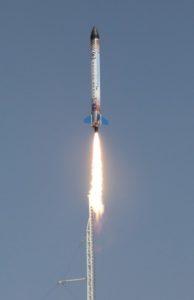 It was just a couple days ago that we covered the Singaporean startup Gilmour Space Technologies, which had used a unique formulation of 3D printed fuel to launch their self-made rocket into sub-orbit. The particular feat sounds strange, sure, but the overall use of 3D printing technology is a practice that is becoming increasingly common in the space exploration industry. In fact, for the rising number of privatized space businesses and services, additive manufacturing could already be considered a major ally in the current race to outer space.
It was just a couple days ago that we covered the Singaporean startup Gilmour Space Technologies, which had used a unique formulation of 3D printed fuel to launch their self-made rocket into sub-orbit. The particular feat sounds strange, sure, but the overall use of 3D printing technology is a practice that is becoming increasingly common in the space exploration industry. In fact, for the rising number of privatized space businesses and services, additive manufacturing could already be considered a major ally in the current race to outer space.
That doesn’t necessarily mean that 3D printing will act as the end-all solution for the production of these satellites and spaceships, but it’s oftentimes beneficial in enhancing the manufacturing process. The Tucson, Arizona-based disruptive space innovator Vector Space Systems recently announced the successful test launch of their P-20 Rocket, which was equipped with a single-piece injector that was produced via 3D printing technology.

The P-20 test launch [Photo Source: Vector Space Systems via Ars Technica]
“This successful launch, our very first vehicle launch as Vector Space Systems, not only demonstrates the maturity of our launch technology, flight operations and propulsion systems, but also shows our commitment to supporting new-space startups by including a customer payload in our very first launch,” said Jim Cantrell, CEO and co-founder of Vector Space Systems. “Vector has already quickly and successfully progressed through not only engine testing, but all the way into initial flight operations, and now the inclusion of a customer payload, putting us on a fast-track to orbital launches by 2018.”
The P-20 test rocket was originally developed by the Garvey Spacecraft Corporation, which was acquired by Vector earlier this year. The rocket is essentially a sub-scale test platform to test the technology and functionality of the second stage of Vector’s launch vehicle, which proved capable of placing 50kg into the Earth’s sub-orbit. Aside from their unique fuel formulation, the most intriguing part of Vector’s test flight is the functional and operational use of a 3D printed injector, which they were able to produce in a single-piece.

[Photo Source: Vector Space Systems via Ars Technica]
Subscribe to Our Email Newsletter
Stay up-to-date on all the latest news from the 3D printing industry and receive information and offers from third party vendors.
Print Services
Upload your 3D Models and get them printed quickly and efficiently.
You May Also Like
The Dental Additive Manufacturing Market Could Nearly Double by 2033, According to AM Research
According to an AM Research report from 2024, the medical device industry, specifically in dentistry, prosthetics, and audiology, is expected to see significant growth as these segments continue to benefit from...
Heating Up: 3D Systems’ Scott Green Discusses 3D Printing’s Potential in the Data Center Industry
The relentless rise of NVIDIA, the steadily increasing pledges of major private and public investments in national infrastructure projects around the world, and the general cultural obsession with AI have...
AM Research Webinar Explores Continuum’s Sustainable Metal Additive Manufacturing Powders
Metal additive manufacturing (AM) powder supplier Continuum Powders is working to develop solutions that empower industries to reduce waste and optimize their resources. An independent life cycle assessment (LCA) of...
3D Printed Footwear Startup Koobz Lands $7.2M in Seed Round
California-based Koobz is focused on reshoring the U.S. footwear supply chain with advanced manufacturing processes, including 3D printing. The startup just announced that it has added $6 million to its...
































